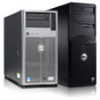Dell PowerEdge XL 5133-4 Dell PowerEdge FTOS Command Line Reference Guide for - Page 130
Port Channel Commands, Time Domain Reflectometer (TDR) Commands, Important Points to Remember
 |
View all Dell PowerEdge XL 5133-4 manuals
Add to My Manuals
Save this manual to your list of manuals |
Page 130 highlights
www.dell.com | support.dell.com Port Channel Commands A link aggregation group (LAG) is a group of links that appear to a MAC client as if they were a single link according to IEEE 802.3ad. In FTOS, a LAG is referred to as a Port Channel. Table 11-1. Port Channel Limits Platform Maximum Port Channel IDs Maximum Members per Port Channel M I/O Aggregator 128 16 Because each port can be assigned to only one Port Channel, and each Port Channel must have at least one port, some of those nominally available Port Channels might have no function because they could have no members if there are not enough ports installed. In the M I/O Aggregator, those ports could be provided by stack members. The commands in this section are specific to Port Channel interfaces: • auto vlan • group • monitor interface • show config (from INTERFACE RANGE mode) • show interfaces port-channel Note: The FTOS implementation of LAG or Port Channel requires that you configure a LAG on both switches manually. For information on FTOS Link Aggregation Control Protocol (LACP) for dynamic LAGs, refer to Chapter 14, Link Aggregation Control Protocol (LACP). For more information on configuring and using Port Channels, refer to the Dell PowerEdge Configuration Guide for the M I/O Aggregator. Time Domain Reflectometer (TDR) Commands Time domain reflectormeter (TDR) is useful for troubleshooting an interface that is not establishing a link; either it is flapping or not coming up at all. TDR detects open or short conditions of copper cables on 100/1000/10GBase-T modules. • tdr-cable-test • show tdr Important Points to Remember • The interface and port must be enabled (configured-see the interface command) before running TDR. An error message is generated if you have not enabled the interface. • The interface on the far-end device must be shut down before running TDR. • Because TDR is an intrusive test on an interface that is not establishing a link, do not run TDR on an interface that is passing traffic. • When testing between two devices, do not run the test on both ends of the cable. 128 | Interfaces















